When you have completed your oil painting, the next step is to frame it. Many people wonder how long the painting should dry before framing. Drying time for an oil painting varies depending on a variety of factors, including the type of paint and primer used, the humidity level, and even the temperature. In this article, we will explore those factors in depth and offer some tips on how to ensure that your painting dries properly before framing it.
How Long Does Oil Paint Take to Dry Completely?
As we mentioned, the drying time for oil paint can vary depending on the factors we just listed. In general, though, you can expect it to take anywhere from one day to a month for an oil painting to dry completely. This may seem like a long time, but it’s important to give your painting this amount of time to dry completely before framing it. Otherwise, you run the risk of damaging the painting or trapping moisture inside the frame which could lead to mold or mildew growth.
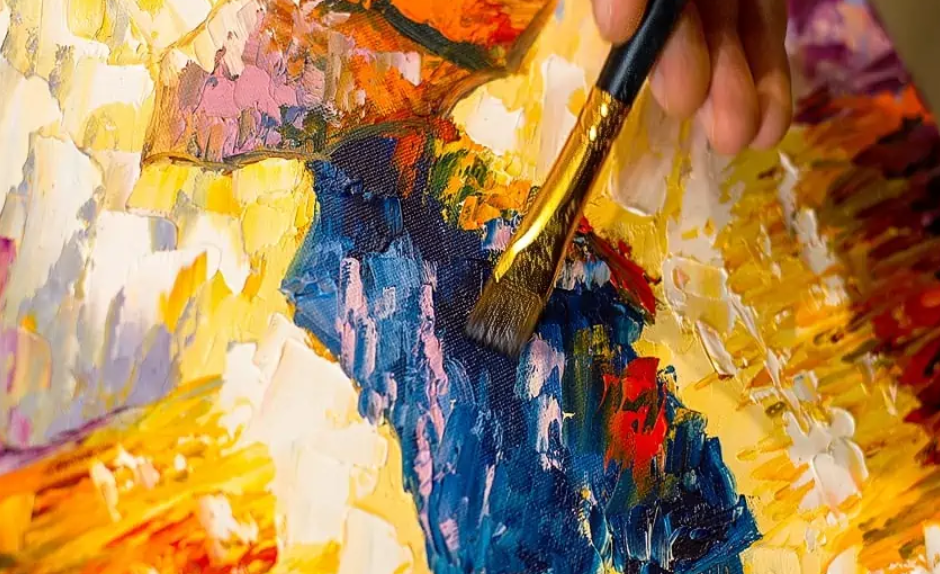
Of course, you don’t have to wait until your painting is completely dry before framing it. You can frame it as soon as the paint is no longer wet to the touch, which is usually after about two weeks. However, if you do frame it before the painting is completely dry, be sure to use an acid-free mat board and mount the painting so that there is at least an inch of space between the painting and the glass. This will allow air to circulate and prevent moisture from being trapped inside the frame. [1]
Your Color Pigments
How long an oil painting takes to dry can be determined by the type of color pigments used. Some colors will take longer to dry than others. For example, white is usually the first color to dry, while black is usually the last. Other colors that tend to dry slowly include blues, greens, violets, and earth tones. Reds and yellows generally fall somewhere in the middle.
Finally, the type of surface you’re painting on will also affect the drying time. A smooth, non-porous surface like glass or metal will cause your paint to dry faster than a porous surface like paper or wood. [2]
Choosing Your Brand
Now that we’ve gone over some of the factors that can impact drying time, let’s talk about how to choose the right paint for your project. If you’re looking for a paint that dries quickly, you should opt for a water-based paint. These paints are typically labeled as “acrylic” or “latex”. They dry more quickly than oil-based paints, so they’re a good option if you’re short on time. [3]
No matter which type of paint you choose, be sure to read the label carefully before purchasing it. The label will tell you how long the paint takes to dry and what temperature range is ideal for drying time.
Painting Techniques
How long should an oil painting dry before framing? This is a common question among artists, as there is no definitive answer. The time it takes for an oil painting to dry depends on several factors, such as the type of paint used, the thickness of the paint layer, the humidity and temperature of the room, and the ventilation. Generally speaking, most oil paintings will be dry to the touch after 24 hours. However, it is advisable to wait at least 48 hours before framing, as this will allow the paint to fully cure and prevent any damage to the frame.
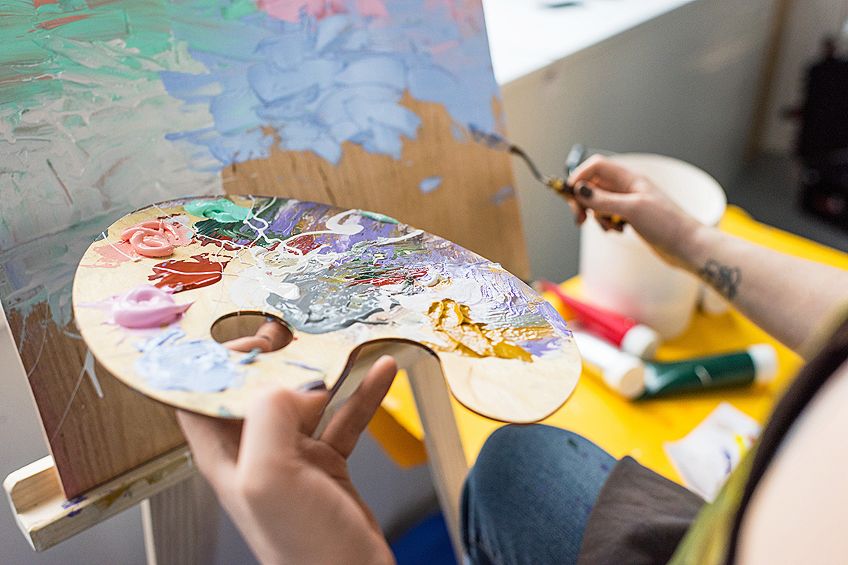
Once your painting is dry, you can begin preparing it for framing. First, remove any dust or debris from the surface with a soft cloth or brush. Next, use a tape measure to determine the dimensions of the painting and cut a piece of mat board or foam core to fit. Center the painting on the mat board and secure it in place with adhesive strips or pins.
Finally, insert the mat board into a frame that is slightly larger than the outside dimensions of the painting. Make sure that the frame has a sealed back and is properly supported so that it will not fall off the wall.
Environmental Factors
There are a few environmental factors that can affect the drying time of your paint. One is humidity. If the air is too humid, it can slow down the evaporation of the water in your paint, causing the paint to take longer to dry. Another factor is temperature. If it’s too cold, the paint will take longer to dry because the molecules move more slowly in cold temperatures.
By painting in an airy room with balanced humidity and temperature, you can fix these issues. For the best outdoor painting experience, find a shady spot with a light breeze. You can also use a fan to help circulate the air and speed up the drying time of your paint.
How to Make Oil Paint Dry Faster
If you’re using oil-based paints, there are a few things you can do to help the paint dry more quickly. One is to add a drying agent, such as linseed oil, to the paint. This will help the paint dry more quickly. Another option is to thin the paint with a solvent, such as turpentine. This will also help the paint to dry faster. Finally, you can try painting in a well-ventilated area with moderate humidity and temperature. If you’re painting outdoors, try to find a spot that’s out of direct sunlight and has good airflow. A fan will assist in the evaporation of your paint and quicken the drying time. [4]
Oil-Based Mediums
You can also use oil-based substances to make your paint dry faster. Mediums are added to paint to change the properties, such as viscosity, transparency, and drying time. There are a few different types of oil-based mediums that can be used to speed up the drying time of your paint. One is a quick-drying medium, which contains a solvent that evaporates quickly, causing the paint to dry more quickly. Another option is a thinning medium, which contains a solvent that helps thin the paint and makes it easier to work with. Finally, there is a gel medium, which thickens the paint and gives it a gel-like consistency.
Solvents and Thinners
As we mentioned before, solvents and thinners can be used to help oil-based paints dry more quickly. Solvents and thinners are liquids that are added to paint to change the consistency. Solvents evaporate quickly, which helps the paint to dry more quickly. Thinners help to thin the paint and make it easier to work with.
Of course, these techniques can also have drawbacks. For instance, adding a drying agent to your paint can make it more difficult to work with and it can also change the color of your paint. Additionally, thinning your paint with a solvent can make it more difficult to control and it can also cause the paint to run or drip.

Toxin-Free Solvent Mediums
When it comes to oil painting, artists have a lot of choices to make. One of the most important choices is what type of solvent to use. A solvent is used to thin oil paint and keep it workable. It evaporates as the painting dries, leaving only the pigment and oil behind.
There are a wide variety of solvents available, but not all of them are created equal. Some solvents are more toxic than others and can be harmful to both the environment and your health. That’s why it’s important to choose a solvent that is both effective and safe.
Here are some of the best toxin-free solvent mediums for oil painting:
1. Gamsol
Gamsol is a mineral spirits solvent that is derived from petroleum. It’s odorless and non-toxic, making it a great choice for artists who are sensitive to strong smells. With Gamsol, you don’t have to worry about your paint drying out as quickly because it evaporates slowly.
2. Turpentine Substitute
Turpentine is a popular solvent for oil painting, but it can be quite toxic. A good alternative is a turpentine substitute, which is made from plant oils and doesn’t have the same harmful effects. This type of solvent can be just as effective as regular turpentine, but it’s much safer to use.
3. Linseed Oil
Linseed oil is extracted from flax seeds and has been used as a solvent for centuries. It’s non-toxic and has a very low evaporation rate, so it won’t dry out your paint. Linseed oil is also great for thinning oil paint and keeping it workable.
4. Walnut Oil
Walnut oil is another popular choice for thinning oil paint. It dries slowly, so it won’t dry out your paint as quickly as some other solvents. Walnut oil is also non-toxic and has a pleasant smell.
5. Stand Oil
Stand oil is a type of linseed oil that has been heated to make it thicker. This thicker consistency makes it ideal for glazing and other techniques that require a slow-drying solvent. Stand oil is non-toxic and has a low evaporation rate, so it won’t dry out your paint.
These are just a few of the many toxin-free solvent mediums available for oil painting. By choosing one of these safe solvents, you can enjoy the process of painting without worrying about the harmful effects of toxic chemicals.
Using Alkyd-Based Mediums
Alkyd-based mediums are synthetic resins that have been designed to speed up the drying time of oil paint. They’re made from a variety of different chemicals, but they all share the same goal: to help your paint dry more quickly.
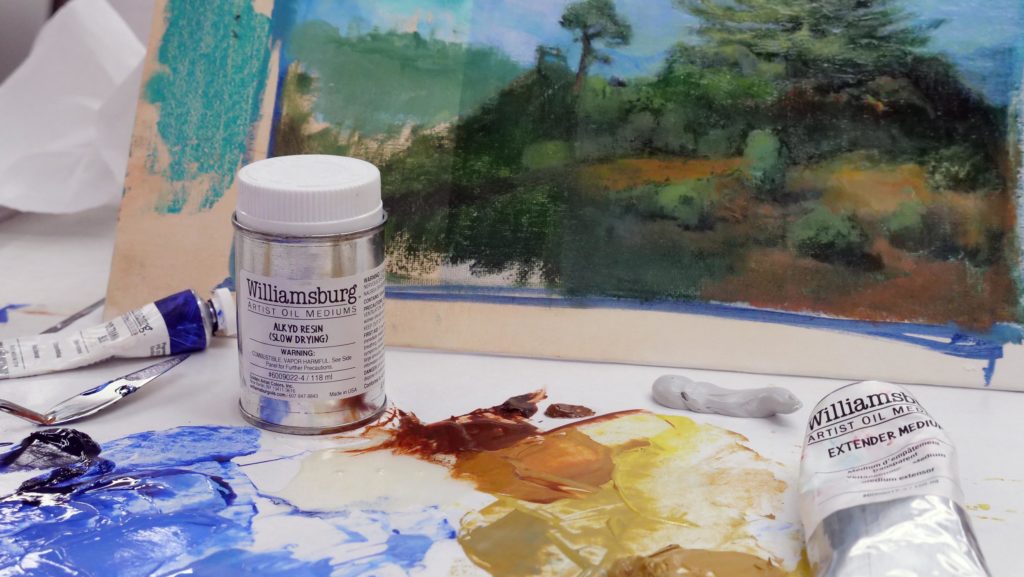
Alkyd-based mediums can be added directly to your oil paint or used as an alternative to traditional solvents. They’re available in both liquid and gel forms, so you can choose the option that best suits your needs.
Alkyd-based mediums have a number of advantages over traditional solvents. They evaporate more slowly, so they won’t dry out your paint as quickly. They also don’t have the same strong smell as some solvents, so they’re more pleasant to use.
The main downside of alkyd-based mediums is that they can be quite toxic. They’re made from a variety of chemicals, many of which are known to be harmful to your health. That’s why it’s important to use these products in well-ventilated areas and to avoid inhaling their fumes.
Applying Gesso and Primer Layers
Gesso and primer are both white, opaque layers that are applied to a painting surface before the first layer of paint. They serve different purposes, but they’re both important for creating a smooth and even surface.
Gesso is a type of plaster that is used to prime a painting surface. It provides a smooth base for the paint to adhere to and also helps to fill in any imperfections in the surface. Gesso is typically white, but it can also be tinted with other colors.
Primer is a type of paint that is used to prepare a painting surface. It helps to seal the surface and also provides a good base for the paint to adhere to. Primer can be either clear or colored, but it’s typically white.
Gesso and primer are both important for creating a smooth surface for painting. If you’re not sure which one to use, consult with an artist or a local art supply store.
Oil Mediums for Drying Oil Paint
Oil paintings take quite a long time to dry, as the paint needs to cure before it becomes hard. This process can take several months, and sometimes even up to a year for thicker paintings. The type of oil medium you use will also affect how long your painting takes to dry. Some oil mediums will actually speed up the drying process, while others will make it take longer. [6]
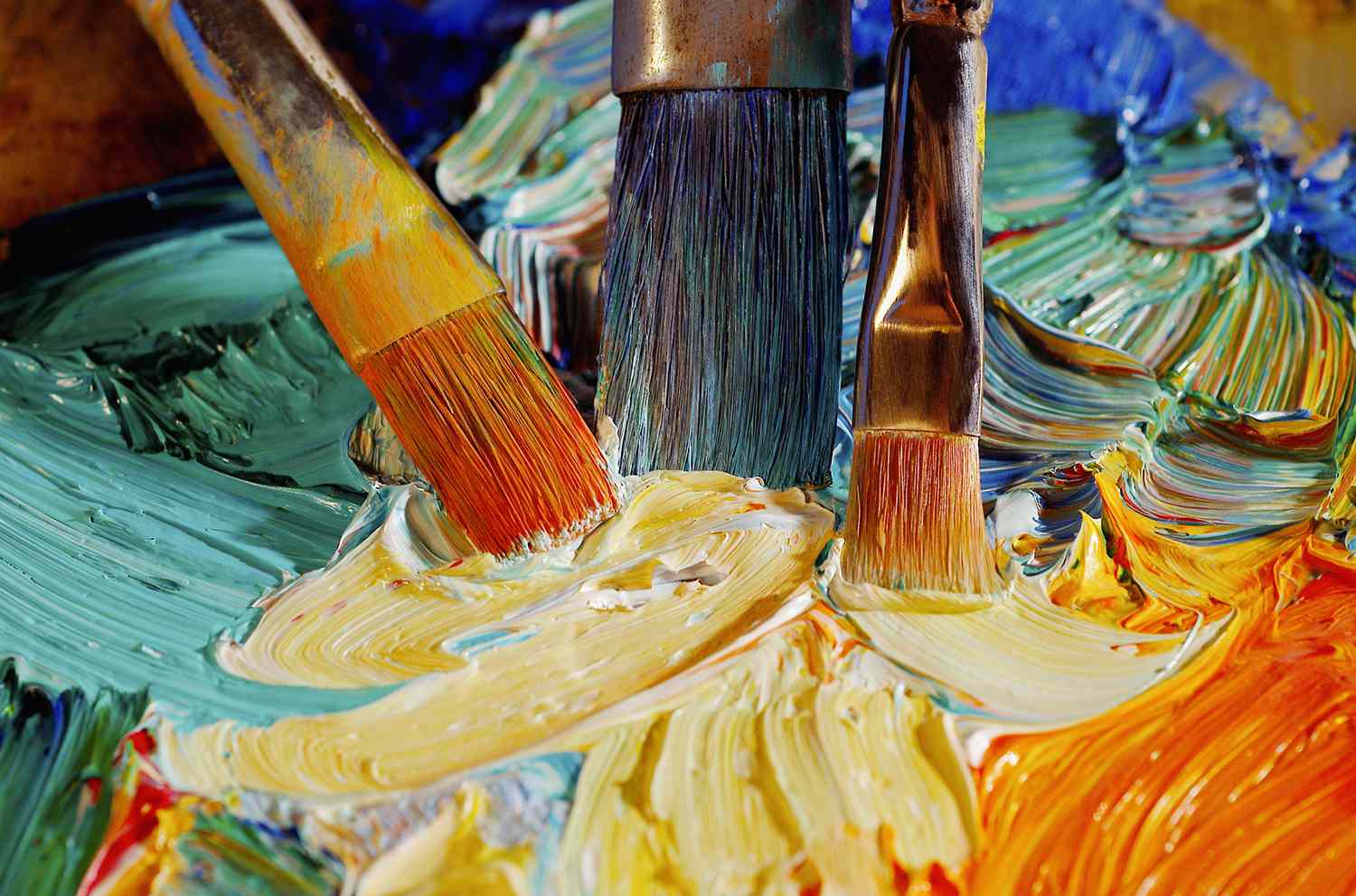
Here are some common oil mediums and how they affect drying time:
Linseed oil: This is a classic oil painting medium that has been used for centuries. It is made from the seeds of the flax plant and has a yellowish color. Linseed oil dries slowly, so if you use this in your painting it will take longer to dry.
Stand oil: This is a more modern oil painting medium that is made from refined linseed oil. It has a higher viscosity than regular linseed oil, which means it dries slower.
Walnut oil: This is another classic oil painting medium that has a similar drying time to linseed oil. Walnut oil is made from the nuts of the walnut tree and has a brown color.
Poirette: This is a French oil painting medium that was popular in the 18th century. It is made from poppy seed oil and dries very slowly.
Lavender oil: This is an herbal oil that has a sweet smell and a purple color. It dries slowly, similar to linseed oil.
Mastic varnish: This varnish, made from the resin of the mastic tree, dries quickly and produces a clear finish. It can be used to speed up the drying time of oil paintings as it dries relatively quickly.
Damar varnish: This is another clear, hard-drying varnish that is made from the resin of the damar tree. It also dries quickly and can be used to speed up the drying time of oil paintings.
As you can see, there are a variety of oil mediums that can be used in painting, and each one has its own drying time. If you are using a slow-drying oil medium like linseed oil, expect your painting to take several months to fully dry. If you use a fast-drying medium like mastic varnish, your painting should be dry within a few weeks.
How to Make Oil Paint Dry Faster at Home
When you’re ready to hang your newly finished oil painting on the wall, you might be wondering how long you need to wait for it to dry first. Oil paint dries slowly compared to other types of paint, but there are a few things you can do to speed up the process.
First, understand that oil paint will take at least six months to fully cure. This curing process is important, as it allows the paint to harden and become more resistant to damage over time.
One way to speed up the drying process is to place your painting in a warm, well-ventilated room. The heat will help evaporate the solvent used in the paint, which will cause it to dry more quickly.
Checking Whether Your Oil Painting is Dry
Once your painting is dry, it should be hard to the touch and no longer tacky. If you’re not sure whether your painting is completely dry, you can do a touch test.
To do this, simply press your finger lightly into the paint surface. If the paint is still soft or tacky, it’s not fully dry yet. If the paint feels hard and dry to the touch, it’s ready to be varnished or framed.
Finally, you can check for drying by looking at the paint under a strong light. If you see any areas that are still wet or glossy, they’re not fully dry yet.
Overall, you’ll need to be patient when waiting for your oil painting to dry. Depending on the medium you used and the conditions in your home, it could take anywhere from a few days to several months. But once it’s finally dry, you can enjoy your beautiful work of art for years to come!
FAQ
How Long Does Oil Paint Take to Dry?
It is a common question asked by oil painters – how long does an oil painting take to dry? The simple answer is that it depends on a few factors, including the type of paint used, the thickness of the paint layer, the temperature and humidity of the environment, and whether a drying agent has been added to the paint.

However, some general guidelines can be followed. For instance, most oil paints will be dry to the touch after 24 hours. However, it is important to note that this does not mean that the painting is completely cured and ready for framing. It is still recommended that you wait at least 72 hours before framing an oil painting. [7]
When Can the Canvas Be Framed?
Your painting will be dry within a few weeks if you use a fast-drying oil medium like mastic varnish. However, if you are using a slow-drying oil medium like linseed oil, expect your painting to take several months to fully dry. In general, it is best to wait at least six months before framing an oil painting. This will give the paint plenty of time to cure and harden, ensuring that it will not be damaged when exposed to the elements.
How Do You Speed Up the Drying Time of Oil Paint?
You can also try using a hair dryer set on low heat to gently blow warm air over the surface of the painting. This will help evaporate the solvents in the paint and make it dry faster. Just be careful not to hold the hair dryer too close to the painting, as this could damage the paint layer.
Finally, you can try putting your painting in a warm, dry place. This could be near a heater or in front of a fan.
Useful Video: How to Make Oil Paint Dry Faster?
Conclusion
When oil paint is exposed to oxygen, it dries through a process of oxidation. Depending on the thickness of the paint layer and the type of oil used, this can take anywhere from a few days to several months. So if you’re wondering how long you should wait before framing an oil painting, the answer is that it depends on the circumstances. However, as a general rule of thumb, it’s best to give the painting at least six weeks to dry before putting it in a frame.
References
- https://www.winsornewton.com/row/education/guides/understanding-the-drying-times-for-oil-colour/
- https://coatings.specialchem.com/selection-guide/pigments
- https://www.hillisbrothers.com/post/acrylic-vs-latex-paint
- https://mysketchjournal.com/9-ways-to-make-oil-paints-dry-faster/
- https://www.jacksonsart.com/blog/2013/04/03/alkyd-artists-oil-colours-primers-and-painting-mediums/
- https://www.jacksonsart.com/blog/2017/06/06/oil-paint-guide/
- https://www.picazzopainting.com/blog/how-long-does-oil-paint-take-to-dry/





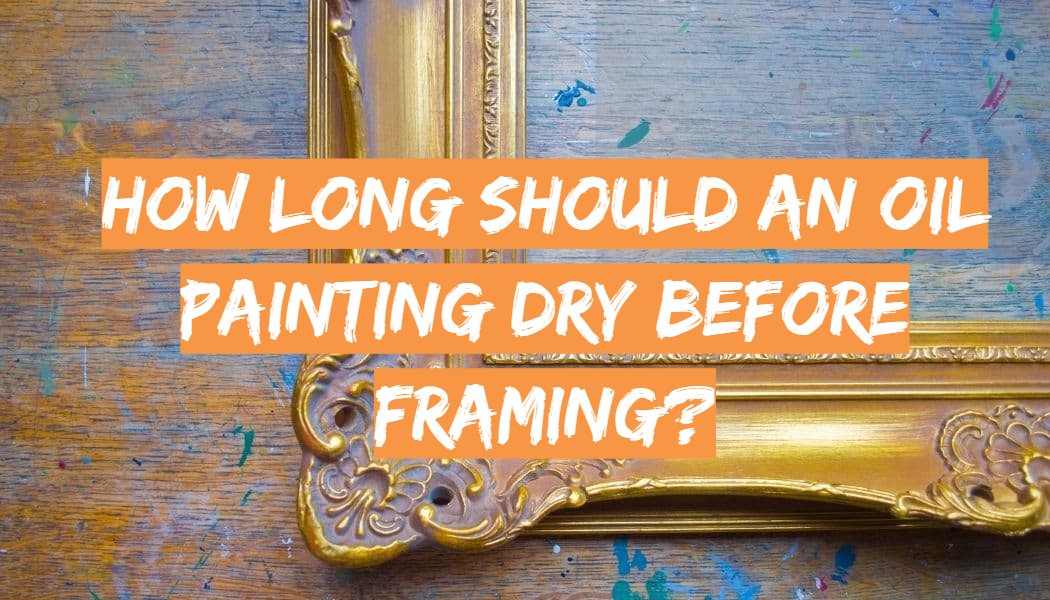




Leave a Review